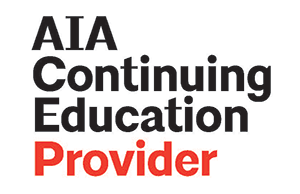 | 1 LU |
 | 1 LU |
Our current model of education, and the place where learning occurs, intentionally separates children and the outside world from one another. It’s a model based on the linear idea that students must learn stuff before entering the “real” world rather than one that uses the real world as a powerful learning tool. It rarely takes advantage of resources, professional expertise, nor community members willing to assist with the learning of young people that are beyond the facility’s boundaries. It’s a model that never actively invites learners beyond traditional age groupings to learn alongside younger learners. Our intergenerational and interconnected model for community learning challenges these constructs by actively and intentionally building more connections between students of all ages and the outside world. This session will explore what a facility would look like based on an educational model where:
Learning Objectives:
Ron Lamarre, AIA, ALEP, ALA, LEED & WELL AP, Architect | Accredited Learning Environment Planner
Ron is the former A4LE Northeast Region president, membership chair, and founder of the New England Chapter, upon which he recently became president-elect. As an award-winning Architect, he has led K12, higher-ed, and public library projects focused on future-ready and life-long learning environments. He has enjoyed serving on juries for the MacConnell Award, the LEsolutions Award, and the Boston Society of Architecture’s Architecture for Education Design Award.
He continuously seeks better ways to create unique community-driven solutions comprised of meaningful and innovative learning environments planned to evolve with advances in education and designed for a sustainable future; including projects that have achieved LEED-certification, the ASHRAE 189.1 Green Building Standard, the New Building Institute’s Advanced Buildings, Zero-Carbon Emission, and Net-Positive Energy. As an active member of the American Institute of Architects Committee on Architecture for Education (CAE), Committee on the Environment (COTE), the American Library Association, and A4LE, Ron seeks to continuously share and learn how to bring higher-performing learning environments to every client.
Ron graduated with a Bachelor of Architecture from Roger Williams College, and an Advanced Certificate in Educational Planning from San Diego State University. Projects recognizing his leadership have been featured in Learning by Design, American School and University, and the Green Building Journal. His published articles include, “Photovoltaics – Theory to Reality 2006” and “Integrated Sustainability 2015”. He has spoken nationally on educational planning and the sustainable design of learning places and spaces.
María Fernández-Donovan AIA, LEED AP BD+C
María is an architect and project manager with Dore + Whittier of Newburyport, Massachusetts, who specializes in K-12 and higher education building design. Her experience consists of projects for users at the kindergarten through university level, including public and private schools, libraries, athletic facilities, campus housing, and classroom buildings. A USGBC LEED Accredited Professional BD+C, María is passionate about sustainability and strives to maximize the implementation of green strategies on every project.
María has been a visiting critic for several high school and college architecture courses. She is a world traveler and has lived in Colombia, Honduras, The Philippines, and Italy in addition to the United States. She graduated from Cornell University with a Bachelor of Architecture degree.